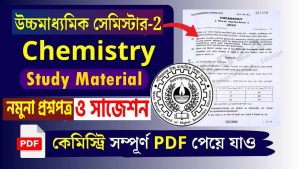Here comes yet another interesting GK Quiz on Soil for everyone. However, this quiz is going to be different. Today, we won’t be asking you questions about soil.
Q1.The characteristic features of this soil type are:
- The soil gets hard when dry and sticky when wet.
- Root penetration is difficult with this soil type.
- The soil provides poor drainage.
- The soil is capable of holding nutrients and water well
Show Answer
Clay Soil
- Smallest particle at less than 0.002 mm
- Restricted air and water movement, so can lie wet for long periods
- Contains high levels of nutrients if drainage is adequate
- Easily compacted if poached while wet
- Bakes hard in dry conditions
- Unsuited to ploughing in spring if subsoil remains wet
- May crack in dry or frosty conditions, which can alleviate compaction
Q2. The characteristic features of this soil type are:
- The soil is rich and dark in color.
- You may find this soil type in agricultural areas and grasslands.
- The soil is capable of retaining moisture well.
- The soil comes with great fertility.
Show Answer
Peaty soils
- High in organic matter
- Wet and often acidic
- Easily compacted when wet
- Prone to drying and erosion if drained
- Unimproved peat has high biodiversity value, stores carbon dioxide and should be preserved
Q3. The characteristic features of this soil type are:
- The soil comes with high organic content.
- The soil type gets created in waterlogged conditions.
- The color of the soil is black or dark brown.
- The soil is actually highly acidic.
Show Answer
Loam
- A mixture of sand, silt, and clay particles
- Good water retention and nutrient holding capacity
- Generally easy to work
Q4. The characteristic features of this soil type are
- One may often find calcium carbonate in the soil.
- The soil comes with alkaline PH.
- The soil holds great drainage.
- The texture of the soil is dry and light.
Show Answer
Clay Sand
- Smallest particle at less than 0.002 mm
- Restricted air and water movement, so can lie wet for long periods
- Contains high levels of nutrients if drainage is adequate
- Easily compacted if poached while wet
- Bakes hard in dry conditions
- Unsuited to ploughing in spring if subsoil remains wet
- May crack in dry or frosty conditions, which can alleviate compaction
Q5. The characteristic features of this soil type are:
- The soil comes with a gritty and light texture.
- The soil comes with low fertility.
- It easily gets warmed up in the spring season.
- The soil comes with poor water retention.
Show Answer
Sand Soil
- Largest soil particle at 0.06–2 mm
- Large air spaces between particles
- Free circulation of air and good drainage
- Warms up quickly in spring and has a long growing season
- Drought-sensitive, often acidic
- Weak structure, so may slump or cap
- Prone to compaction by deep cultivation or harvesting in wet weather
- Can suffer from runoff and erosion by water and wind
Q6. Watermelons grow best in
- (a) Alluvial soil
- (b) Sandy soil
- (c) Black soil
- (d) Laterite soil
Show Answer
Solution: (b)
Watermelon is a tender, warm-season vegetable. Watermelons can be grown in all parts of the country, but the warmer temperatures and longer growing season of southern areas especially favor it. Watermelons grow best on a sandy loam soil, although yields on clay soils can be increased significantly by mulching raised planting rows with black plastic film.
Q7. The most extensive soil cover of India comprises.
- (a) laterite soils
- (b) black soils
- (c) alluvial soils
- (d) marshy soils
Show Answer
Solution: (c)
Alluvial soil constitutes the largest soil group in India, constituting 80% of the total land surface. It is derived from the deposition of silt carried by rivers and are found in the Great Northern plains from Punjab to the Assam valley. Alluvial soils are generally fertile but they lack nitrogen and tend to be phosphoric.
Q8. To which group does the black cotton soil of India belong?
(a) Laterite
(b) Podzol
(c) Chernozem
(d) Alluvial
Show Answer
Solution: (c)
Chernozem (meaning: black soil), or “black earth”, is a black-coloured soil containing a high percentage of humus (7% to 15%), and high percentages of phosphoric acids, phosphorus and ammonia. It is very fertile and produces a high agricultural yield.
Q9. In which one of the following States is laterite soil found?
(a) Kerala
(b) Uttar Pradesh
(c) Rajasthan
(d) Maharashtra
Show Answer
Solution: (d)
Laterite soil is a type of soil that is formed from the weathering of rocks in tropical and subtropical regions. It is characterized by its red, brown, or purple color and is rich in iron and aluminum.
Laterite soils in India are found in the Eastern Ghat of Orissa, the Southern parts of Western Ghat, Malabar Coastal plains and Ratnagiri of Maharashtra and some part of Andhra Pradesh.
Q10. Red soil is normally found in India in which regions?
(a) Eastern Region only
(b) Southern Region only
(c) Eastern & Southern part of the Deccan Plateau
(d) None of these
Show Answer
Solution: (C)
In India, red soil develops on crystalline igneous rocks in areas of low rainfall in the eastern and southern parts of the Deccan plateau. These soils are abundant along the eastern slopes of Western Ghats, Odisha and Chhattisgarh and in the southern parts of the middle Ganga plain. The soil develops a reddish color due to a wide diffusion of iron in crystalline and metamorphic rocks.
Q11. The soil of Kerala is rich in which of the following soils?
(a) Alluvial Soil
(b) Laterite Soil
(c) Sandy Soil
(d) Loamy Soil
Show Answer
Solution: (B)
Laterite soil covers the majority of area in Kerala. They cover about 65 per cent of the total area of the State, occupying a major portion of the midland and mid-upland regions and are the most extensive of the soil groups found in Kerala. Heavy rainfall and high temperature prevalent in the State are conductive to the process of laterisation.
Q12. In which of the following states can you find pink (laterite) soil?
(a) West Bengal and Andhra Pradesh
(b) Gujarat and Madhya Pradesh
(c) Karnataka
(d) Himachal Pradesh and Uttaranchal
Show Answer
Solution: (A)
Solution: (a)
Laterite Soil is found in those regions of India which receive heavy rainfall with alternate dry and wet period. The states where this type of soil can be found are Kerala, Tamil Nadu, Karnataka, West Bengal, Madhya Pradesh Andhra Pradesh, Bihar, Meghalaya, Assam, Odisha to name a few. The soils are pink in colour due to the presence of iron oxides.
Q13. Saline and alkaline soils in India are also called as
(a) Kallar
(b) Khadar
(c) Regur
(d) Bangar
Show Answer
Solution: (A)
Solution: (a)
Saline and alkaline soils in India are also called as kallar.
Q14. Laterite soil is found in which of the following States?
(a) Haryana and Punjab
(b) Gujarat and Rajasthan
(c) Jammu & Kashmir and Himachal Pradesh
(d) Karnataka and Tamil Nadu
Show Answer
Solution: (D) Laterite Soil is found in those regions of India which receive heavy rainfall with alternate dry and wet period. The states where this type of soil can be found are Kerala, Tamil Nadu, Karnataka, West Bengal, Madhya Pradesh Andhra Pradesh, Bihar, Meghalaya, Assam, Odisha to name a few. The soils are pink in colour due to the presence of iron oxides.
Q15. Government has launched Purple Revolution in Jammu and Kashmir. It is associated with the cultivation of which crop? [Bihar STET]
A)Rose
B)Almond
C)Lavender
D)Cedarwood
Show Answer
Correct Answer(C): Lavender
Lavender has been designated as Doda brand product, to promote lavender under ‘One District, One Product’ initiative of the Modi Government. Doda district in Jammu and Kashmir is the birthplace of India’s Purple Revolution, or the cultivation of Lavender.
Q16. Which among the following institutes has developed Bhu Parikshak device to detect soil health in 90 seconds?
A)IIT Delhi
B)IIT Kanpur
C)IIT Bombay
D)IIT Madras
Show Answer
Correct Answer(B) : IIT Kanpur
IIT Kanpur has developed a portable testing device called ‘Bhu Parikshak’ that can detect soil health in just 90 seconds through a mobile application. The technology has been transferred to a start-up. Work through infrared technology.
17 .Soil having high content of aluminum and iron oxide is also known as
A)meadow soil
B)podzol soil
C)pedalfer soil
D)chernozen soil
Show Answer
Correct Answer : pedalfer soil
18 .The best suitable soil for plant growth is
A)Sandy
B)Loamy
C)Clay
D)None of the above
Show Answer
Correct Answer(b) : Loamy
The ideal blend of soil for plant growth is called loam. Often referred to as topsoil or black dirt by landscape companies, loam is a mixture of sand, clay, and silt. The estimated mixture is 40% sand – 40% silt – 20% clay.
- The silt soil is more fertile compared to the other three types of soil.
- Clay is the densest and heaviest type of soil which does not drain well or provide space for plant roots to flourish.
- Loam is the equilibrium type of soil. It is a combination of sand, silt and clay such that the beneficial properties of each are included. For instance, it has the ability to retain moisture and nutrients; hence, it is more suitable for farming. This soil is also referred to as agricultural soil as it includes an equilibrium of all three types of soil materials, being sandy, clay, and silt, and it also happens to have humus.
19. Which of the following is the outermost solid part of the Earth?
A)Caldera
B)Crust
C)Core
D)None of the above
Show Answer
Correct Answer : Crust
The lithosphere is the solid, outer part of the Earth. The lithosphere includes the brittle upper portion of the mantle and the crust, the outermost layers of Earth’s structure.
20. The Mission of the Ramsar Convention is to conserve
A)wetlands
B)rivers
C)oceans
D)deserts
Show Answer
Correct Answer : wetlands
The Convention’s mission is “the conservation and wise use of all wetlands through local and national actions and international cooperation, as a contribution towards achieving sustainable development throughout the world”. Wetlands are among the most diverse and productive ecosystems.
21. Which of the following statement is correct about cotton cultivation?
A)The ideal climatic conditions for the production and growing of cotton are the required temperatures of 21-30 degrees Celsius and 50-100 cm rainfall.
B)Black soil is the ideal soil for the production and growing of Cotton.
C)Both A and B
D)None of the above
Show Answer
Correct Answer : Both A and B
The ideal conditions for the production of cotton are:
Climate: Cotton grows well in warm and moist climate where summer is long and where there is salinity in the soil.
Temperature: Cotton grown well in a temperature of 24°C. But cotton bursts out, high temperature is injurious.
Rainfall: 60-100 cm rainfall is essential for the cultivation of cotton.
Soil: Loamy soil mixed with lime and potash is good for cotton. Cotton grows well in Black Cotton Soil which is sticky in nature and has water retentive capacity.
Show Answer
Show Answer
Show Answer
Show Answer
Table of Contents
ToggleSome Impotent point: Soil
- The Barak Valley is located in the southern region of the Indian state of Assam. Soils of sugarcane growing areas in Cachar and Karimganj districts in the Barak valley of Assam have silty loam to clayey soils.
- The “green gold” revolution is the name given to the promotion and trade of bamboo to bring about a quantum jump in the economic growth of the Northeastern states of India
- India is one of the largest producers of tea in the world. Approximately 52% of the total tea produced in India comes from the state of Assam. West Bengal comes at the second position in the list of tea-producing states. Tamil Nadu comes at third place in the list of tea-producing states.
- The tea plantation requires rainfall of 150-250 cm
- The Ganga delta region is suitable for Jute cultivation due to the rich fertile alluvium soil and favourable temperature and rainfall.
- alluvial soils is most suitable for cultivation of cereals.
- Soil formation, also known as pedogenesis, is a process that occurs over many tens of thousands of years.







